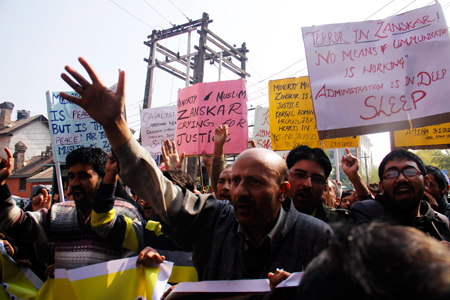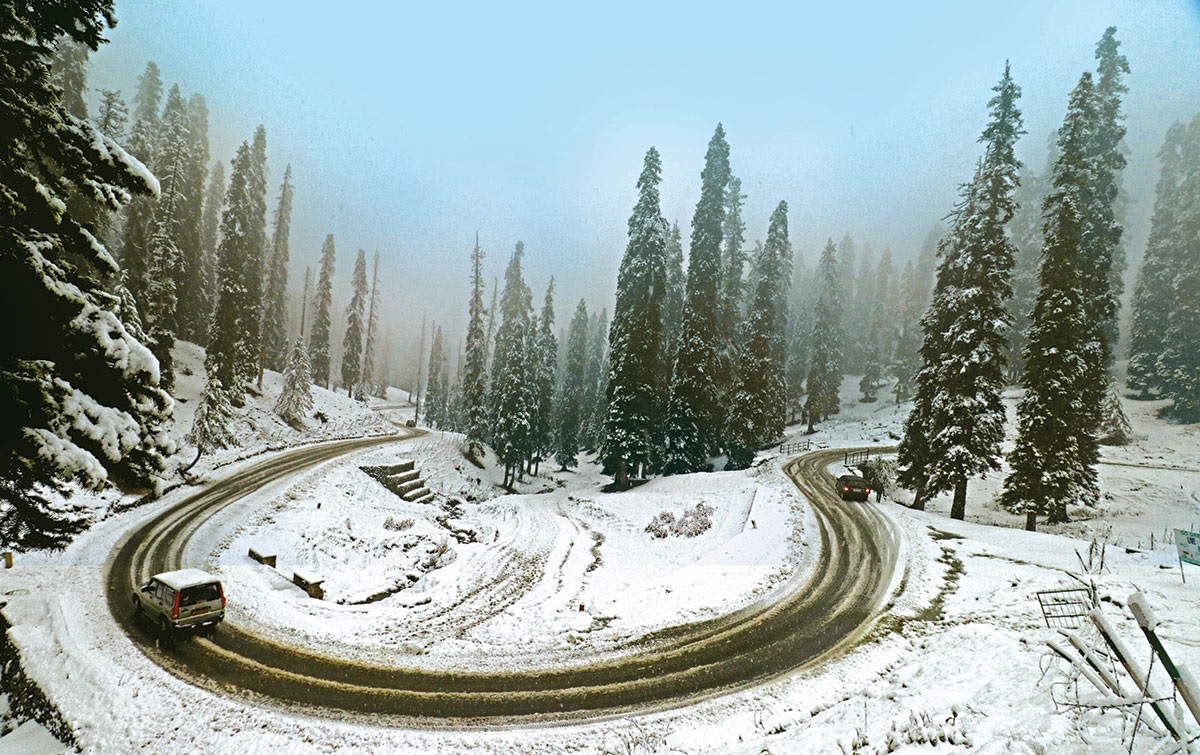have improved their tally by 1.97 percent, Hindus are the real gainers who witnessed an improvement of 5.57 percent, almost tripling its share since 1981. Right now (2011 census is awaited) Muslims constitute 47.40 percent of Ladakh with Buddhists at second position with 45.87 percent. Hindus, Sikhs and Christians own 6.22, 0.31 and 0.17 percent slice in the population respectively.
Buddhists caste system follows the Hindu social stratification. Throughout Ladakh, there are three basic castes – the high caste Rgyal-rigs (royal), Sku-drag (families of chiefs, ministers and regents) and the middle caste class, the Mang-rigs, mostly farmers and select professions. Rigs-ngan, the lower castes comprise Mons, Garbas and Bedas (all schedule castes). The ones who work with iron or metals are blacksmiths and carpenters locally known as Garbas. Mons are professional musicians playing drums and flute on festivals and different gatherings. Bedas are a mix of all blacksmiths, carpenters and musicians.

These low caste Buddhists are in minority and are among 12 notified schedule tribes of J&K. “Moreover, most of the highest administrative posts are filled by Muslims in Padum. And the Buddhists in Zanskar are believed to be less informed compared to the Buddhists living in other parts of Ladakh” said a resident in Leh.
D
uring festivals and at different ceremonies and gatherings in Ladakh, these low castes Rigs-ngan’s are invited but they are not allowed to come forward in front or sit with the high castes. “In gatherings, they get food only once the high castes are served. More importantly, they are asked to bring their utensils with them and if not then they get food served in different utensils other than higher castes are served in” says a senior citizen in Leh, wishing anonymity. He adds, “They are treated the same way as untouchables are treated in India”. “No inter caste marriages are supported in Buddhism and gradually the trend has been emulated by Muslim population of Ladakh. They don’t prefer inter caste marriages now.”
Conversions have always been a major issue in Ladakh region. Muslims and Buddhists have lived in harmony for centuries but inter-faith marriages became a major issue in 1989. And later, these and various other reasons led the Ladakh to demand for special status of union territory. Separating Ladakh into two districts in 1979 (Buddhist Leh district and Muslim Kargil district) did not help, particularly because the majority Buddhist area of Zanskar was part of Kargil district. In 1995, the Indian government approved the formation of the Ladakh Autonomous Hill Development Council
It is mostly the low cast Buddhists who change their religion and it is assumed that they change their religion because of inequality and ill-treatment being meted out to them by high castes. Over the years, it has been noticed that girls from low Buddhist castes prefer to marry Muslims in Kargil (Shia Muslims who do not accept caste system) and then they embrace Islam. History shows that mostly girls of low caste Buddhists used to accept Islam. Locals believe the tradition of polyandry was a factor leading to conversions and inter-faith marriages, but gradually the incidences of polyandry has come down but not the issue of inter religion marriages.
From time to time, different campaigns were run to abolish caste system in Buddhism. One was led by Dalai Lama himself when he ate food from the hands of low caste Buddhist and informed others to shun the casteism as it was never supported by Buddha. But nothing has so far changed on ground. “The low caste Buddhists held a series of meetings with the local Buddhist clergy seeking equal social status. Now the trend has changed. These low castes educate their children which may have admonished their self-worth. And these converted people are also among them. They are educated now,” Sheikh Lotfi said.
It is an age old practice in Buddhism to train one of their sons to become a Monk but the low castes in Ladakh are barred from this ritual as well. Dr Tondup says, “In Buddhism, we don’t have any class or section. We don’t believe in dogmatism. But the problems people talk about are in our culture. There are weaker sections who face problems during gatherings and functions. We tried to do something for them but I accept that due to bias we couldn’t solve them”. Despite repeated attempts to contact the minister for minority affairs, she didn’t answer the calls.
















All of us know that monks live auterely but during my recent visit to Ladakh, I did not see any monk living like that. They used to live in monastaries and caves in high mountains with just bare essentials and without any luxuries but not anymore.
They have got everything now. Most monastaries particularly well known ones have huge dining halls, kitchens, chefs, generators, scooters, cars, etc.
Thanks for the article and the information it contained. I had been meaning to read about Zanskar riots until I read your article.